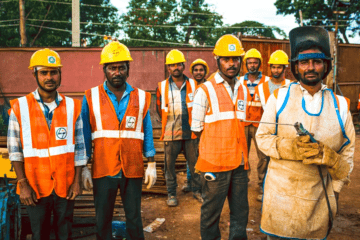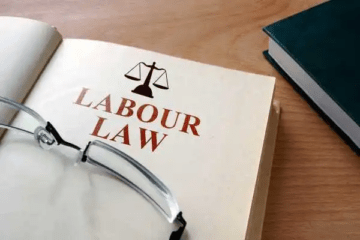This article is written by Rahul, an intern under Legal Vidhiya.
Introduction
The concepts of strikes, lockouts, and gherao are fundamental aspects of labor law that have significant implications for industrial relations. The right to strike, lockout, or gherao is a legal right that is bestowed upon the workers, unions, and employers to negotiate their demands and grievances. In this essay, we will explore the meaning, types, and legal aspects of strikes, lockouts, and gherao backed by relevant case laws and statutes. These industrial actions are usually taken by employees, who feel that their rights have been violated, to protest against their employer’s actions. However, there are instances where these actions become illegal, and in such cases, employees and employers are liable to penalties.
Strike
A strike can be defined as a work stoppage or a collective cessation, which is initiated and carried out by the employees in response to a dispute, usually related to wages, benefits, or working conditions. The workers refuse to work until their demands are met, and the strike usually involves a significant number of employees, often organized by a union. The Indian law also recognizes the right to strike as a fundamental right, and it is protected under the Indian Constitution.
Types of Strikes[1]
There are several types of strikes, which vary depending on the nature of the dispute, the sector, and the level of organization of labor. Below are the common types of strikes:
- Economic Strike: An economic strike is a work stoppage that is carried out by employees in response to a dispute over wages, benefits, or other economic factors. The primary goal of an economic strike is to secure better pay, benefits, or other economic benefits. In most cases, economic strikes are initiated and organized by labor unions.
- Wildcat Strike: A wildcat strike is an unauthorized work stoppage that is carried out by employees, usually without the approval or sanction of the union. Wildcat strikes are usually spontaneous and not organized, and they are carried out in response to a perceived injustice or dissatisfaction.
- Sympathy Strike: A sympathy strike is a work stoppage that is initiated and carried out by employees to show support for another group of workers who are engaged in a labor dispute. In most cases, sympathy strikes are carried out by unions that have a close relationship or affiliation with the affected union.
- Sit-in Strike: A sit-in strike is a work stoppage where the employees refuse to leave the workplace, often occupying their place of work until their demands are met. Sit-in strikes are usually carried out as a sign of protest, and they are intended to draw attention and put pressure on the employer.
Laws related to Strike.
The Indian Constitution recognizes the right to form associations and unions under Article 19(1)(c)[2] which includes the right to strike. The right to strike is considered a fundamental right of workers, and it is protected by several laws, including the Trade Union Act, 1926[3]. The Indian law allows workers to initiate a strike on any grounds, which include social, political, or economic factors, provided the strike is carried out peacefully and without resorting to violence or vandalism.
Section 22[4] imposes restrictions on the right to strike by ensuring that a written notice is given to the employer before initiating the strike. This notice must state the reasons for the strike, the number of workers involved, and the duration of the strike. The workers are also required to approach the conciliation officer and attempt to resolve the dispute.
Illegal Strikes
An illegal strike is taken by employees without following due procedure or breaking the law. Such strikes usually result in the disruption of essential services and harm the economy. Employers and employees must follow certain procedures before engaging in strikes, which include giving notice to the employer and the government. Failure to follow these procedures can result in civil and criminal liability.
Section 22 also provides for the procedure that must be followed before taking a strike. According to this section, a strike can be called off only after giving notice to the employer at least 14 days before the intended strike. Further, the notice must contain details such as the reasons for the strike and the number of employees who will be participating in the strike. Failure to follow these procedures can result in the strike being classified as illegal.
The case of Indian Iron and Steel Co. Ltd. v. Their Workmen [5] is a landmark case that dealt with illegal strikes. In this case, the Supreme Court held that any strike that violates the provisions of the Industrial Disputes Act, 1947[6], is illegal. The court further held that if the strike is deemed illegal, the employees who participated in the strike are not entitled to any wages for the period of the strike.
Lockouts
A lockout can be defined as a situation where an employer prevents workers from entering the workplace and carrying out their duties, usually due to a labor dispute. A lockout is an employer’s equivalent of a strike, and it is initiated to put pressure on workers to accept the employer’s demands or to resolve a labor dispute. Lockouts can also be illegal, and the penalty for engaging in illegal lockouts is severe.
Types of Lockouts.
There are two main types of lockouts: offensive lockout and defensive lockout.
- Offensive Lockout: An offensive lockout is an employer-initiated work stoppage that seeks to pressure employees to accept the employer’s demands. It is used to gain leverage in negotiations, and it is often initiated in response to a perceived threat, such as an impending strike.
- Defensive Lockout: A defensive lockout is a work stoppage that is initiated by the employer in response to an unauthorized strike by the employees. In most cases, the lockout is intended to prevent damage to property or to maintain control over the workplace.
Laws related to Lockout.
Section 22[7] also applies to illegal lockouts. The provision states that before the employer initiates a lockout, they must issue a notice to the government at least six weeks before the intended action. The notice must explain the reasons for the lockout and include the number of employees who will be affected by the lockout. A lockout that is initiated without following due procedure is deemed illegal.
The case of Indian Hume Pipe Co. Ltd vs Its Workmen[8] dealt with an illegal lockout situation. In this case, the Supreme Court held that a lockout that is initiated without following due procedure is illegal. The court also held that the provision of Section 22[9] applies to all lockouts and that failure to comply with the provision can result in harsh penalties.
Gherao
Gherao is a term commonly used in India, which refers to a situation where workers prevent an employer, manager, or another authority figure from leaving the workplace by surrounding them. Gherao is a form of protest, and it is usually initiated.
There are two types of gherao – legal and illegal.
Legal Gherao:
A legal gherao is a peaceful form of protest which does not involve any use of force or coercion. It is a legitimate form of protest which is recognized by law. Legal gherao can be done in a peaceful and non-violent manner and without any obstruction to essential services or causing harm to any individual or property.
In the case of Management of Safdarjung Hospital v. Kuldip Singh[10], the Supreme Court held that the right to gherao is a legitimate form of protest and cannot be banned outright, but it should be exercised lawfully.
Illegal Gherao:
An illegal gherao is a form of protest which involves the use of force or coercion to prevent the targeted person from leaving. It is an unlawful form of protest which is not recognized by law. In illegal gherao, the protesters may obstruct essential services or cause harm to individuals or property.
In the case of Jay Engineering Works Ltd vs State of West Bengal and Ors [11], the Supreme Court held that illegal gherao is not protected under the right to protest and is punishable under the law.
Provisions for Illegal Strikes, Lockouts, and Gherao.
The penalties for illegal strikes, lockouts, and Gherao are severe and can have a significant impact on the parties involved. The penalties usually involve fines, damages, and imprisonment. The objective of the penalties is to prevent parties from engaging in illegal actions and to ensure that the economy is not adversely affected.
Section 23 [12]provides for penalties for illegal strikes and lockouts. The section states that any workman who participates in an illegal strike is not entitled to any payment or wages for the period of strike, and further, he is also liable to pay a fine that is not more than fifty rupees. The employer is also entitled to take disciplinary action against the employee, including termination of the employee’s services.
Section 25 [13] provides for penalties for illegal lockouts. The section states that any employer who initiates an illegal lockout is liable to pay a penalty of fifty thousand rupees or the wages of the employees who were affected by the lockout, whichever is less. The employer is also liable to pay damages to the affected employees.
Section 141 [14]of the Indian Penal Code, 1860, makes unlawful assembly punishable by law. If the gherao involves violence or the threat of violence, then it can be punishable under Sections 147, 148, 342, or 506 of the IPC.
Conclusion
Strikes, lockouts, and Gherao are regular features of the industrial landscape, and these actions, when legal, can serve as a means for employees to assert their rights. However, illegal strikes, lockouts, and gherao can cause tremendous harm to the economy and can be detrimental to the parties involved. Therefore, parties involved in industrial actions must follow due procedures and comply with applicable laws and regulations. It is also necessary that penalties for illegal strikes, lockouts, and gherao be imposed on persons involved in these activities.
[1] https://www.whatishumanresource.com/strikes
[2] THE INDIAN CONSTITUTION ACT,1950 s19(1)(c)
[3] https://www.indiacode.nic.in/handle/123456789/2386?sam_handle=123456789/1362
[4]THE INDUSTRIAL DISPUTES ACT, 1947, s 22
[5] AIR 1958 SC 130
[6] https://labour.gov.in/sites/default/files/THEINDUSTRIALDISPUTES_ACT1947_0.pdf
[7] THE INDUSTRIAL DISPUTES ACT, 1947, s 22
[8] AIR 1968 SC 1002
[9] THE INDUSTRIAL DISPUTES ACT, 1947, s 22
[10] AIR 1970 SC 1407
[11] AIR 1968 CALCUTTA 407
[12] THE INDUSTRIAL DISPUTES ACT, 1947, s 23
[13] THE INDUSTRIAL DISPUTES ACT, 1947, s 25
[14] THE INDIAN PENAL CODE, 1860, s 141




0 Comments